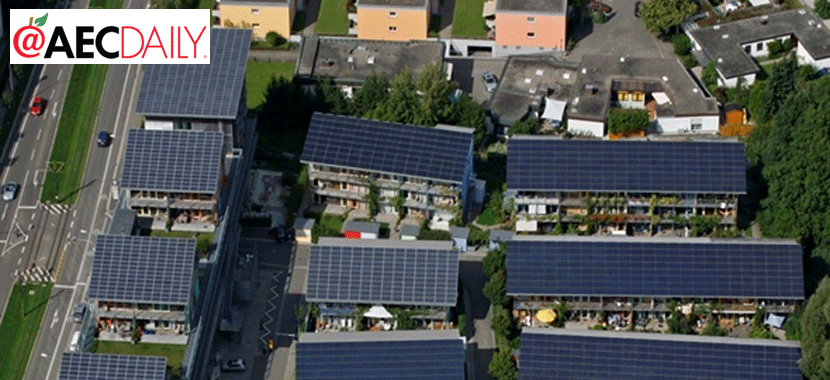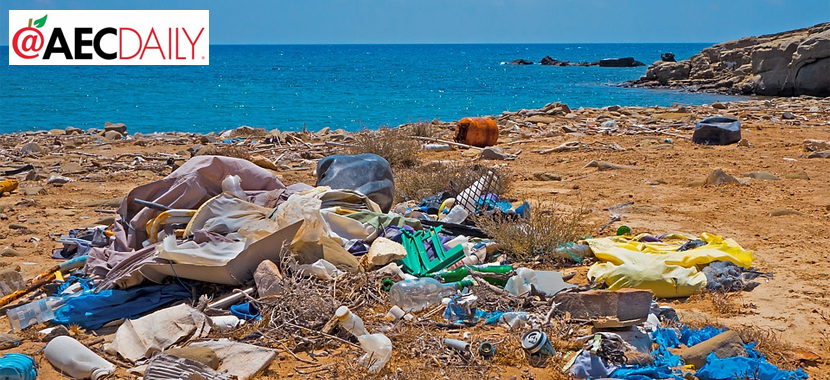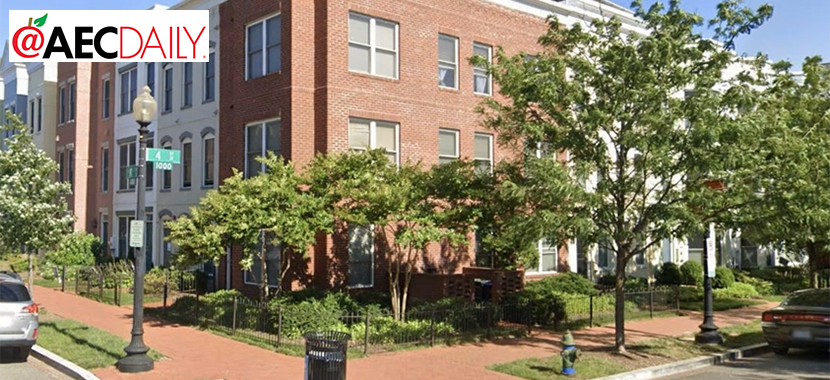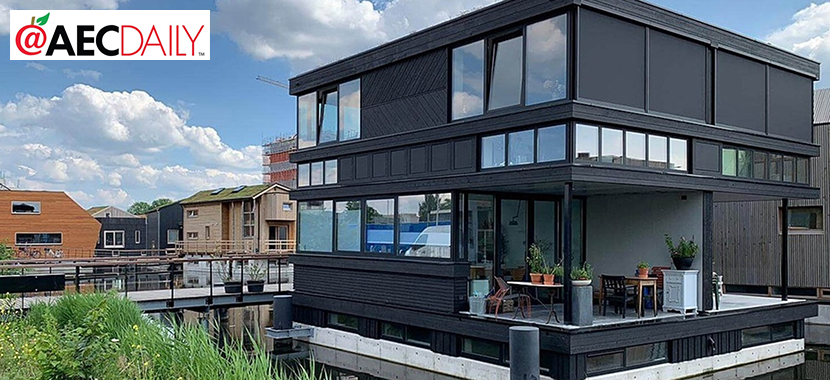266 Elmwood Ave., Suite 511
Buffalo
NY 14222
USA
Phone: 877- 566-1199









Displaying 16 course(s).
Scan this code with your mobile device camera to take this page on-the-go!

https://redirect.aecdaily.com/s18122/www.aecdaily.com/course/1110658
 Water management is a complex and significant process affecting all levels of planning and building design and is tasked with solving a number of new and emerging issues. This course reviews current stormwater and wastewater management issues and current practices and then takes a look at a number of new and emerging issues that water management plans need to address.
Water management is a complex and significant process affecting all levels of planning and building design and is tasked with solving a number of new and emerging issues. This course reviews current stormwater and wastewater management issues and current practices and then takes a look at a number of new and emerging issues that water management plans need to address.
Scan this code with your mobile device camera to take this page on-the-go!

https://redirect.aecdaily.com/s18122/www.aecdaily.com/course/976063
 Code-mandated requirements for inspections first appeared in the Uniform Building Code in 1927, and their original intent is still recognizable in our current codes: inspections by a building official are required at specific points in the construction process. In this course, we will examine an alternative to the periodic inspection process, the full-time inspector of record (IOR). We’ll review the historical context and qualifications of the IOR, when a project may benefit from an IOR, and the impact of using an IOR on life safety and property damage.
Code-mandated requirements for inspections first appeared in the Uniform Building Code in 1927, and their original intent is still recognizable in our current codes: inspections by a building official are required at specific points in the construction process. In this course, we will examine an alternative to the periodic inspection process, the full-time inspector of record (IOR). We’ll review the historical context and qualifications of the IOR, when a project may benefit from an IOR, and the impact of using an IOR on life safety and property damage.
Scan this code with your mobile device camera to take this page on-the-go!

https://redirect.aecdaily.com/s18122/www.aecdaily.com/course/1103482
 Growing and concentrating populations, shifting weather patterns, increasing frequency and ferocity of storm events, disappearing water supplies, and rising costs have made providing potable water and managing other water-related issues increasingly difficult for many communities. This course explores their many water issues and how they adapt their management practices to address constantly evolving water conditions.
Growing and concentrating populations, shifting weather patterns, increasing frequency and ferocity of storm events, disappearing water supplies, and rising costs have made providing potable water and managing other water-related issues increasingly difficult for many communities. This course explores their many water issues and how they adapt their management practices to address constantly evolving water conditions.
Scan this code with your mobile device camera to take this page on-the-go!

https://redirect.aecdaily.com/s18122/www.aecdaily.com/course/1114251
 When building professionals gather, as they often do these days, to confer under the banner of ESG, the E tends to get the lion's share of the airtime. After all, there is a direct and readily understandable connection between buildings and environmental sustainability, and many of us have devoted significant time and effort to educating ourselves in best practices around this important facet of professional practice. But what about the S? How do those of us engaged in the business of the built environment drive bona fide social impact through the work we do? In fact, there are numerous paths available, and arguably, real social equity is reliant on a foundation of safe and stable housing as much as any other factor. During this webinar, we will explore needs and solutions in the realm of housing affordability and access while specifically touching on both our existing housing stock and impact-focused strategies for bringing new housing online.
When building professionals gather, as they often do these days, to confer under the banner of ESG, the E tends to get the lion's share of the airtime. After all, there is a direct and readily understandable connection between buildings and environmental sustainability, and many of us have devoted significant time and effort to educating ourselves in best practices around this important facet of professional practice. But what about the S? How do those of us engaged in the business of the built environment drive bona fide social impact through the work we do? In fact, there are numerous paths available, and arguably, real social equity is reliant on a foundation of safe and stable housing as much as any other factor. During this webinar, we will explore needs and solutions in the realm of housing affordability and access while specifically touching on both our existing housing stock and impact-focused strategies for bringing new housing online.
Scan this code with your mobile device camera to take this page on-the-go!

https://redirect.aecdaily.com/s18122/www.aecdaily.com/course/969299
 The principles, tools, and techniques for sustainable community planning (SCP) outlined in Part 1 of this course have evolved into various approaches to the actual implementation of SCP around the world. These approaches have been developed in response to local context and in communities ranging in size and form from large cities to small ecovillages and housing clusters. Part 2 of this course describes a number of these approaches for both land and water and also suggests a means of integrating them into a single, comprehensive planning model. The course concludes with case studies of a range of built sustainable community examples and planning exercises and includes some of the lessons learned.
The principles, tools, and techniques for sustainable community planning (SCP) outlined in Part 1 of this course have evolved into various approaches to the actual implementation of SCP around the world. These approaches have been developed in response to local context and in communities ranging in size and form from large cities to small ecovillages and housing clusters. Part 2 of this course describes a number of these approaches for both land and water and also suggests a means of integrating them into a single, comprehensive planning model. The course concludes with case studies of a range of built sustainable community examples and planning exercises and includes some of the lessons learned.
Scan this code with your mobile device camera to take this page on-the-go!

https://redirect.aecdaily.com/s18122/www.aecdaily.com/course/1114700
 Seattle has ranked among the country’s fastest-growing cities since the mid-1990s, causing gentrification and displacement of vulnerable communities. For example, African Americans accounted for 73 percent of Seattle’s Central District (CD) population in 1970 and have fallen to less than 14 percent today. As a result, Black churches in the CD face difficult decisions about whether to stay or relocate. However, the churches own property and other assets and, working as a network, could mitigate this gentrification and displacement through strategic real estate development. This vision is advanced by the Nehemiah Initiative Seattle, a collaboration focused on developing the significant real estate assets of Black churches to stabilize and benefit the CD’s African American community. Since 2019, the Nehemiah Initiative has been collaborating with the College of Built Environments at the University of Washington through a series of interdisciplinary design studios focused on this vision. This presentation provides a brief history of Seattle’s Central District, an overview of the Nehemiah Initiative, and the mutual benefits of collaboration between the academy and the community.
Seattle has ranked among the country’s fastest-growing cities since the mid-1990s, causing gentrification and displacement of vulnerable communities. For example, African Americans accounted for 73 percent of Seattle’s Central District (CD) population in 1970 and have fallen to less than 14 percent today. As a result, Black churches in the CD face difficult decisions about whether to stay or relocate. However, the churches own property and other assets and, working as a network, could mitigate this gentrification and displacement through strategic real estate development. This vision is advanced by the Nehemiah Initiative Seattle, a collaboration focused on developing the significant real estate assets of Black churches to stabilize and benefit the CD’s African American community. Since 2019, the Nehemiah Initiative has been collaborating with the College of Built Environments at the University of Washington through a series of interdisciplinary design studios focused on this vision. This presentation provides a brief history of Seattle’s Central District, an overview of the Nehemiah Initiative, and the mutual benefits of collaboration between the academy and the community.
Scan this code with your mobile device camera to take this page on-the-go!

https://redirect.aecdaily.com/s18122/www.aecdaily.com/course/1027351
 Energy creation, distribution, and consumption are all in a period of transition. Understanding this transition and its various aspects is critical to sustainable transitional energy planning (STEP). This course delves into the reasoning behind the STEP approach and its contributions to creating resilient communities and explores available exhaustible and renewable energy resources and innovations in the energy sector that can be leveraged by STEP.
Energy creation, distribution, and consumption are all in a period of transition. Understanding this transition and its various aspects is critical to sustainable transitional energy planning (STEP). This course delves into the reasoning behind the STEP approach and its contributions to creating resilient communities and explores available exhaustible and renewable energy resources and innovations in the energy sector that can be leveraged by STEP.
Scan this code with your mobile device camera to take this page on-the-go!

https://redirect.aecdaily.com/s18122/www.aecdaily.com/course/971534
 ASCE 7-16, Minimum Design Loads and Associated Criteria for Buildings and Other Structures, provides several design alternatives that architects and engineers can use to reduce the potential for either partial or progressive collapse due to extraordinary events, whether natural or man-made. The minimum design load philosophy of the building code is at odds with some extraordinary events. ASCE 7, Section 2.5, “Load Combinations for Extraordinary Events,” which is incorporated into the IBC, covers such extraordinary events, stating: “Where required by the owner or applicable code, strength and stability shall be checked to ensure that structures are capable of withstanding the effects of extraordinary (i.e., low-probability) events, such as fires, explosions, and vehicular impact without disproportionate collapse.” There are several methods for achieving added safety in both expected and extraordinary events. These include performance-based design (for expected events) and methods for design against partial or progressive collapse (for extraordinary events). In this briefing, we’ll explore methods for design against partial or progressive collapse as found in ASCE 7, Section 1.4.6, “Extraordinary Loads and Events.”
ASCE 7-16, Minimum Design Loads and Associated Criteria for Buildings and Other Structures, provides several design alternatives that architects and engineers can use to reduce the potential for either partial or progressive collapse due to extraordinary events, whether natural or man-made. The minimum design load philosophy of the building code is at odds with some extraordinary events. ASCE 7, Section 2.5, “Load Combinations for Extraordinary Events,” which is incorporated into the IBC, covers such extraordinary events, stating: “Where required by the owner or applicable code, strength and stability shall be checked to ensure that structures are capable of withstanding the effects of extraordinary (i.e., low-probability) events, such as fires, explosions, and vehicular impact without disproportionate collapse.” There are several methods for achieving added safety in both expected and extraordinary events. These include performance-based design (for expected events) and methods for design against partial or progressive collapse (for extraordinary events). In this briefing, we’ll explore methods for design against partial or progressive collapse as found in ASCE 7, Section 1.4.6, “Extraordinary Loads and Events.”
Scan this code with your mobile device camera to take this page on-the-go!

https://redirect.aecdaily.com/s18122/www.aecdaily.com/course/921177
 Before the 2020 COVID-19 pandemic, organizations chose remote working to improve productivity, accommodate favored employees, and reduce their real estate costs. When governments ordered mandatory office closures to contain the virus, businesses with little or no experience in remote working were forced online. Until a vaccine is developed, remote working will continue, and firms must look beyond surviving to thriving. This briefing paper presents some key research findings about remote working and productivity. Evidence-based recommendations are made for how these findings could be applied to architecture and design (A&D) firms.
Before the 2020 COVID-19 pandemic, organizations chose remote working to improve productivity, accommodate favored employees, and reduce their real estate costs. When governments ordered mandatory office closures to contain the virus, businesses with little or no experience in remote working were forced online. Until a vaccine is developed, remote working will continue, and firms must look beyond surviving to thriving. This briefing paper presents some key research findings about remote working and productivity. Evidence-based recommendations are made for how these findings could be applied to architecture and design (A&D) firms.
Scan this code with your mobile device camera to take this page on-the-go!

https://redirect.aecdaily.com/s18122/www.aecdaily.com/course/1035660
 The reasons for and benefits of adopting STEP have become increasingly clear as both national and international communities continue in their efforts to transition from dirty fuel sources to renewable ones. This course reviews the various systems and strategies that enable STEP, such as smart grids and microgrids, and explores strategies that STEP enables, such as integrated design processes, efficient water management, and energy innovation.
The reasons for and benefits of adopting STEP have become increasingly clear as both national and international communities continue in their efforts to transition from dirty fuel sources to renewable ones. This course reviews the various systems and strategies that enable STEP, such as smart grids and microgrids, and explores strategies that STEP enables, such as integrated design processes, efficient water management, and energy innovation.
Scan this code with your mobile device camera to take this page on-the-go!

https://redirect.aecdaily.com/s18122/www.aecdaily.com/course/983367
 Policies targeting the reduction of carbon emissions associated with building products require the disclosure of embodied carbon data to inform those policies and verify whether reduction targets or incentive requirements have been met. This course aims to provide a guide to collecting high-quality embodied carbon data.
Policies targeting the reduction of carbon emissions associated with building products require the disclosure of embodied carbon data to inform those policies and verify whether reduction targets or incentive requirements have been met. This course aims to provide a guide to collecting high-quality embodied carbon data.
Scan this code with your mobile device camera to take this page on-the-go!

https://redirect.aecdaily.com/s18122/www.aecdaily.com/course/1021076
 Prequalification of contractors is a method used to manage the risks of an open tender process. It ensures the contractors invited to bid on the project have demonstrated applicable experience and are capable of delivering the necessary quality and value. This course is a primer on contractor prequalification and describes who benefits from the process, the applicable project delivery methods, the role of the architect, the typical information requested of the contractor, and when to use prequalification and when not to.
Prequalification of contractors is a method used to manage the risks of an open tender process. It ensures the contractors invited to bid on the project have demonstrated applicable experience and are capable of delivering the necessary quality and value. This course is a primer on contractor prequalification and describes who benefits from the process, the applicable project delivery methods, the role of the architect, the typical information requested of the contractor, and when to use prequalification and when not to.
Scan this code with your mobile device camera to take this page on-the-go!

https://redirect.aecdaily.com/s18122/www.aecdaily.com/course/980404
 The first course of this series from the Carbon Leadership Forum provides a high-level overview of embodied carbon: how it is defined, its significance in the global climate crisis, and how it is impacted by the construction industry. In addition, the course examines procurement policies as an embodied carbon reduction strategy—in particular, the Buy Clean policies, their uptake in the US, and their key elements.
The first course of this series from the Carbon Leadership Forum provides a high-level overview of embodied carbon: how it is defined, its significance in the global climate crisis, and how it is impacted by the construction industry. In addition, the course examines procurement policies as an embodied carbon reduction strategy—in particular, the Buy Clean policies, their uptake in the US, and their key elements.
Scan this code with your mobile device camera to take this page on-the-go!

https://redirect.aecdaily.com/s18122/www.aecdaily.com/course/968977
 The tools, techniques, and approaches to sustainable community planning (SCP) have evolved substantially in the last few decades, turning it from an abstract notion into a most comprehensive and beneficial planning approach. Part 1 of this two-part course examines the basic principles that these tools and approaches are based on, the local and global issues that they must address to be effective, and the nature and structure of the tools themselves. The review includes numerous links to the sources of these tools.
The tools, techniques, and approaches to sustainable community planning (SCP) have evolved substantially in the last few decades, turning it from an abstract notion into a most comprehensive and beneficial planning approach. Part 1 of this two-part course examines the basic principles that these tools and approaches are based on, the local and global issues that they must address to be effective, and the nature and structure of the tools themselves. The review includes numerous links to the sources of these tools.
Scan this code with your mobile device camera to take this page on-the-go!

https://redirect.aecdaily.com/s18122/www.aecdaily.com/course/877584
 The magnitude and negative impacts of solid waste have become increasingly apparent, especially in regard to plastics and their presence in the oceans. As a result, there have been many approaches to rethinking what constitutes waste and how it can be avoided or used/managed in a more sustainable manner. This course explores these emerging approaches to waste management planning and illustrates them with current examples of solid waste management plans and initiatives from various countries around the globe. In the first part of this course, we’ll dig into the impact of our growing waste problem and some methods for rethinking this waste. In the second, we’ll provide guidance for the design of a sustainable community waste management plan.
The magnitude and negative impacts of solid waste have become increasingly apparent, especially in regard to plastics and their presence in the oceans. As a result, there have been many approaches to rethinking what constitutes waste and how it can be avoided or used/managed in a more sustainable manner. This course explores these emerging approaches to waste management planning and illustrates them with current examples of solid waste management plans and initiatives from various countries around the globe. In the first part of this course, we’ll dig into the impact of our growing waste problem and some methods for rethinking this waste. In the second, we’ll provide guidance for the design of a sustainable community waste management plan.
Scan this code with your mobile device camera to take this page on-the-go!

https://redirect.aecdaily.com/s18122/www.aecdaily.com/course/1037314
 Energy creation, distribution, and consumption are all in a period of transition. Understanding this transition and its benefits is critical to sustainable transitional energy planning (STEP). This course reviews the nature of the transition, the forces driving it, emerging energy systems and sources, and international and national examples. It details the process required for STEP and provides a comprehensive overview of the many renewable energy options now viable for community energy systems. It concludes with a series of illustrated sample plans and projects.
Energy creation, distribution, and consumption are all in a period of transition. Understanding this transition and its benefits is critical to sustainable transitional energy planning (STEP). This course reviews the nature of the transition, the forces driving it, emerging energy systems and sources, and international and national examples. It details the process required for STEP and provides a comprehensive overview of the many renewable energy options now viable for community energy systems. It concludes with a series of illustrated sample plans and projects.
Displaying 16 course(s).